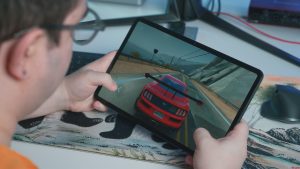Digital Complications and Applications
What is digital addiction?
Digital addiction among students in New Zealand is a growing concern in the modern era, as technology and digital devices have become an integral part of daily life. While technology offers numerous benefits, excessive and uncontrolled use can lead to addiction and negatively impact students’ academic performance, mental health, and overall well-being.

Photo by Onur Binay on Unsplash
It is important to note that digital addiction is a complex issue, and individual experiences may vary. If you or someone you know is struggling with digital addiction, it is advisable to seek professional help from mental health experts or counsellors who specialize in digital addiction or internet gaming disorder.
What Social Media students are using in 2023
There is an ever-increasing market in terms of what students are using for social media content: the most used social media are Facebook, Youtube, TikTok, Messenger, Roblox, Whatsapp, Instagram and Whatsapp. However, with digital technology new sites appear each year.

How we use Digital technology at Ararira Springs Primary
At Ararira Springs we are very aware of the need for digital technology in different areas. Each Hapori uses it slightly differently and in years four to eight the school runs an optional Bring Your Own Device (BYOD).
Huarapa Hapori (Y0-1) Our youngest learners are learning how to take digital photos so they have evidence of their learning.
Kaunuku Hapori: (Y2-3) Our children use devices to take photos and make recordings of learning (eg Pepeha). They will also learn (or continue to develop) skills associated with particular apps, for example, Scratch and Book Creator.
Hikuwai Hapori (Y4 – 6) Our learners in years 4 to 6 use digital devices in order to create content which was previously not possible. For example: put a recording of their Pepeha on Book Creator and publish it online for whanau to watch and any whanau overseas can view this publication (password protected).
Teretere (Y7-8) The ākonga in years 7 & 8 use digital devices to support their learning. They use specific apps or sites for follow-up learning tasks, research and sharing learning with kaiako and whānau.
How we limit screen time at Ararira Springs
Each day the WiFi for students starts at 9 am so they can’t access the internet before 9 am. All teachers encourage students to socialise before school, during morning tea and at lunchtime. No students will be on their own devices during these times. Each hapori carefully discusses and decides how digital technologies will enhance the students learning during the Term.
How you can help:
- Set up screen time limits by going into the settings – screen time and then setting up time limits on the device
- Be NetSafe – read this article 7 Steps for Whanau and implement best practices for your child/ren. Also, browse around NetSafe to pick up more great tips and tricks.
- Another website to read regarding internet safety – Safewise
- Ako teachers are more than welcome for students to leave their devices at school and then take them home for the weekend.
- Devices are only allowed in common areas of the house.
- Inform ako teachers if anything is happening at home that might have an effect on the child’s learning at school.

Recent Comments